THANK YOU

Thank you for your enquiry. A member of the Hennessy & Furlong team will contact you within 24hrs.

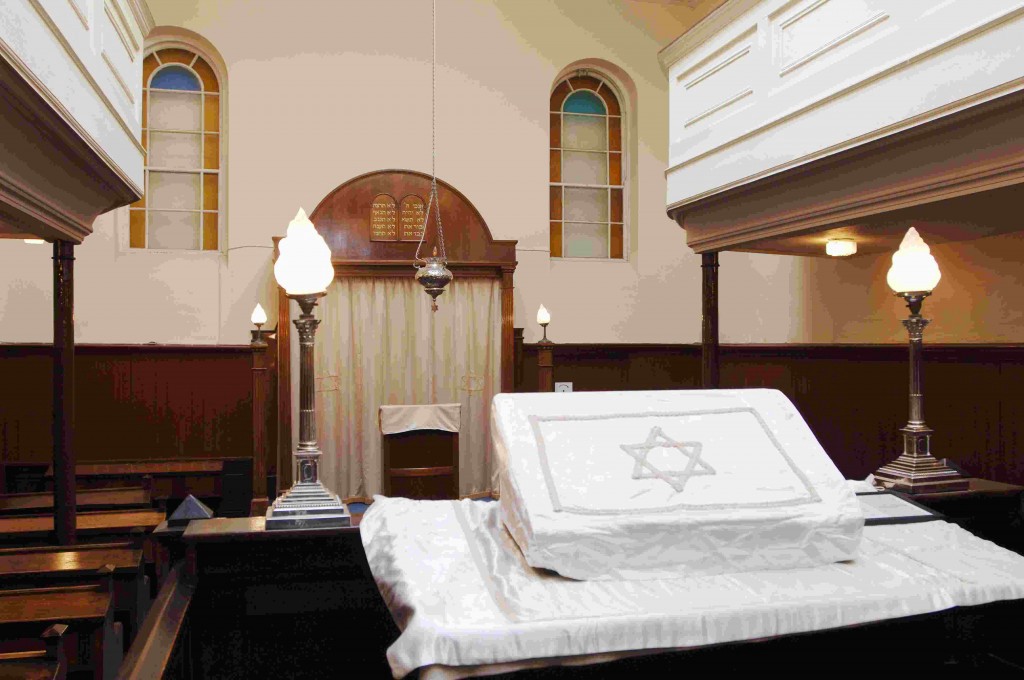
JEWISH DUBLIN
Many of our visitors start their vacation in Dublin so let’s start our round-up in Dublin’s original Jewish Quarter, Portobello, known in its day as Little Jerusalem!
1. Irish Jewish Museum
For many visitors to Ireland, a good place to start is the Irish Jewish Museum in Dublin. Don’t expect a Smithsonian type experience; it’s a small volunteer-run museum with limited resources in the Portobello neighbourhood of Dublin that was historically a Jewish enclave. Here, you will find enthusiastic volunteers keen to share the history of Jewish settlement in Ireland from the beginning of the 13th century.
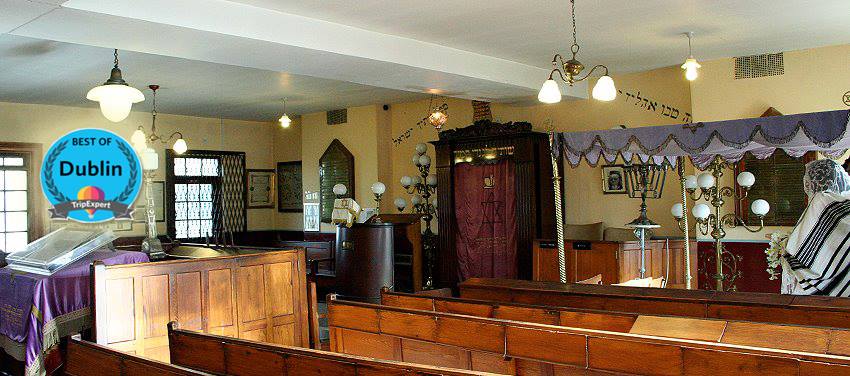
©Irish Jewish Museum
The museum is an interesting part of Dublin’s built heritage. It was a former Synagogue and much of the interior of that synagogue is preserved on the upper floor of the museum. Allow at least one hour for your visit and take time to talk to the enthusiastic volunteers about the mission of the museum.
2. A Taste of Jewish Dublin I – The Bretzel Bakery Café

©The Bretzel Bakery
Just around the corner from the Irish Jewish Museum in Lennox Street lies one of Dublin’s oldest bakeries. Established over 150 years ago, it originally served the Jewish community as a kosher bakery. The last Jewish owner of the bakery, Mrs Klein, sold the bakery in the 1960s.
Then, the Hackett family took over the business in the 1960s. According to Morgan Hackett, the day-to-day running of the bakery was at one time strictly supervised by the local Jewish community. "Someone would come in early in the day to make sure we were doing things correctly. For example, during Passover, we weren't allowed to use flour, we had to use meal. The bakery would be checked to make sure there wasn't a trace of flour anywhere. Then we'd have a big clean up and go back to using flour again for the rest of the year." [Credit: Irish Times: Bretzel could be tasty proposition; 05 July 2000].
Today, the bakery is owned by William Despard who continues the tradition to bake wonderful breads and pastries. Indeed, Bretzel still bakes its challah from an original recipe. On site, there is a delightful small café where the aroma of freshly baked breads and pastries will delight the sense; arrive early, especially at weekends as it’s a popular spot with visitors and locals alike.
3. A Taste of Jewish Dublin II – Shouk
Alon and Dana Salman have been bringing a taste of Tel Aviv and the Mediterranean to Dublin’s northside since 2017. A short taxi ride from Dublin’s city centre, Shouk can be easily missed as it has no street frontage but it is definitely worth the effort. The design of the restaurant is rustic but it is in the extensive menu where this delightful restaurant comes into its own.

©allthefood.ie
Shouk literally means market in Hebrew or open-air food marketplace so common in Israel. Yet the menu draws not only on Israeli influences but from around the Mediterranean with a nod to Irish influences. Chef-owner Alon is Israeli-Irish; born in Tel Aviv to an Israeli father and mother Mary from Wexford.
The restaurant attracts a diverse crowd from local young professionals to more senior folk seeking an authentic taste of Israel.
Advance reservations are recommended; when this writer visited early one evening, there was already a queue; not for long though as the friendly enthusiastic staff were on hand to secure space at the counter where it was a delight to see the workings of the kitchen at first hand.
Shouk has a BYOB policy with a modest corkage fee. So drop into a liquor store for whatever you think will blend well with a Mediterranean menu.
--> https://www.facebook.com/shoukdublin/
4. Louis Copeland Menswear
One of Dublin’s most recognised fine menswear stores is Louis Copeland’s. Think fine tailored suits and high end fashion. The flagship store is on Capel St with other branches around the city centre.
Their client list reads like a who’s who, among them Presidents Regan and Clinton, Pierse Brosnan, and many more.
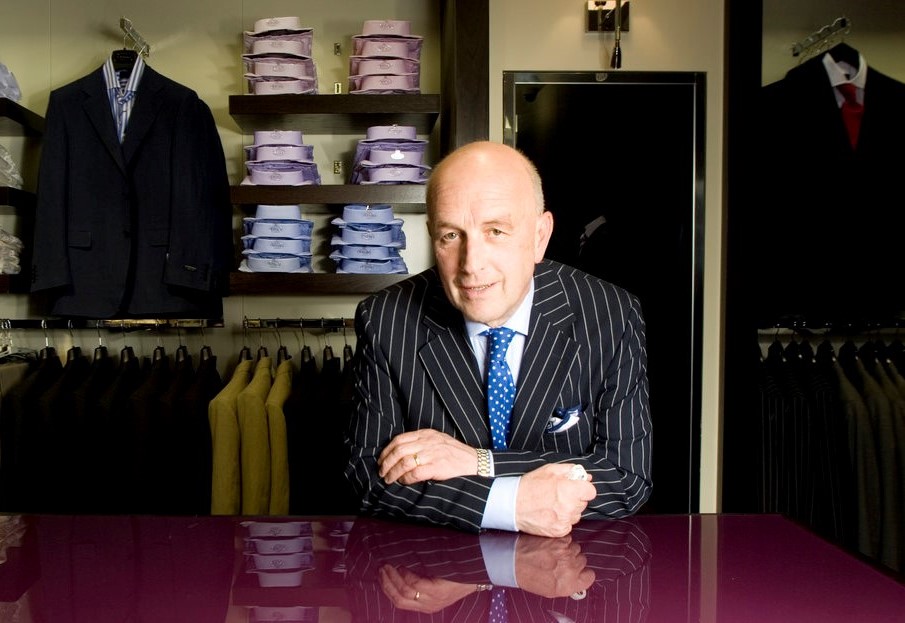
©thejournal.ie
The business was set up by the current owners’ grandfather, Hyman Kaplan, a Jewish man who moved to Ireland from Lithuania in 1912. According to an Irish Times report (7 March 2014), "He was a trouser-maker. He used to make clothes for a shop on Capel Street and then he took over that shop.” Hyman changed his surname to Copeland and his son Louis took over the business in turn. But it was under Hyman’s grandsons, Louis and Adrian, that things expanded.
--> https://www.louiscopeland.com
5. Jewish Artists – National Gallery of Ireland
Ireland’s National Gallery on Merrion Square houses a wide range of Irish and European Art.
Jewish artists with an Irish connection to watch out for include Harry Kernoff, Estella Solomons and Sir Jacob Epstein.
Harry Aaron Kernoff
Born of Russian Jewish and Spanish parents in London, Harry’s family moved to Dublin in 1914. Harry’s father began a cabinet-making business in the city. Harry took night classes at the Dublin Metropolitan School of Art while working in his father’s business initially.
From the early 1920s, he pursued a career as a fulltime artist in the newly established independent and impoverished Ireland when it was very difficult to make a living as an artist. His studio was in Stamer Street in Dublin’s Jewish quarter, often referred to as Little Jerusalem.
With his training as a woodworker in his father’s business, he also focused on the production of woodcuts. These woodcuts were published in his own books and illustrated a number of other publications.
His paintings mainly take their inspiration from Dublin and its people taking in scenes of Dublin’s pubs like Davy Brynes. In the National Gallery, look out for one of Kernoff’s signature work, Davy Brynes Pub, Dublin, from The Bailey.

©HennessyFurlong
Estella Solomons
Like Harry Kernoff, Estella Solomons trained at The Dublin Metropolitan School of Art. She was from a prominent Jewish family and interestingly was actively involved in revolutionary politics in the lead up to Ireland’s fight for independence after the failed 1916 Easter Rising. Her studio was a hideaway both for ammunition and Irish freedom fighters on the run. Indeed, many of them sat for her in her studio. Unfortunately, she had to destroy many such paintings in fear of incriminating the sitters. A few of the paintings survive such as “On Parole” which was painted in 1920. This painting is on display at The National Gallery.
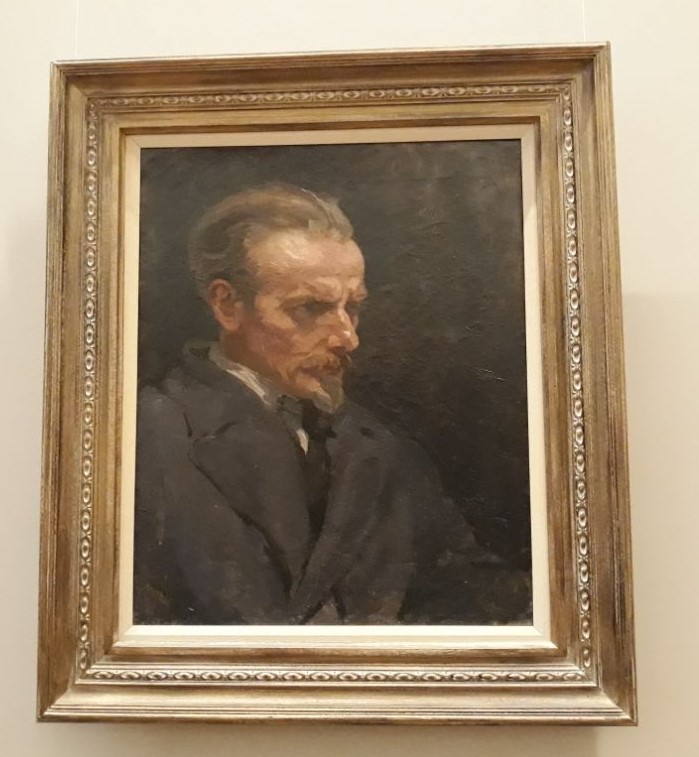
©HennessyFurlong
Sir Jacob Epstein
Jacob Epstein was born to Polish Jewish parents in New York in 1880. He moved to Europe in 1902, eventually settling in Britain where he became a British citizen. In London, he became acquainted with Dublin-born George Bernard Shaw. Indeed, Shaw introduced Epstein to the New English Art Club which resulted in several commissions for Epstein. In the National Gallery, you will see Epstein’s head and shoulders sculpture of Shaw. Epstein said of it that “it captured elements so subtle that they would be difficult to explain.”
As an aside, Epstein also sculpted Oscar Wilde’s tomb at Père Lachaise Cemetery, Paris.
--> https://www.nationalgallery.ie/
BELFAST AND NORTHERN IRELAND
Northern Ireland is regularly on our itineraries these days for our guests. Following the 1997 Peace Accord, the so-called Troubles of the Seventies, Eighties and Nineties have been almost eliminated. Today, Northern Ireland has reinvented itself as a welcoming visitor destination with an increasing number of attractions that will keep visitors engaged for a few days.
Belfast was a thriving 19th century industrial city where one of its major employers was Harland and Wolff. Founded by Edward Harland and Gustav Wolff in 1861, the company became an innovative shipbuilder for the buoyant British Empire. Gustav Wolff was from a Hamburg Jewish background though he himself was a member of the Church of Ireland (Anglican/Episcopalian). Nonetheless, he used his Jewish heritage to win new business from both Britain and Hamburg. Likewise, he had a good relationship with the Hamburg American Line where Albert Ballin was also of Jewish background.
The city’s main attraction for visitors is Titanic; an amazing building in the shape of a ship’s bow that showcases the whole Titanic story from its concept to the sad loss on the ship on its maiden voyage.

©Titanic Belfast
TITANIC AND ITS JEWISH CONNECTIONS
Eli Moskowitz, author of The Jews of The Titanic (written in Hebrew), concluded from his research that there were several hundred Jews on broad.
Keep in mind the political and social situation in Europe in the earlier part of the 1900s, especially for Jews: poverty, oppression and the ongoing pogroms in Russia. So for many Jews, emigration was seen to be their escape. So, while there were some Jews in first class, most were in the third class, which was reserved for immigrants and where men had the lowest chances of surviving. The exact number of Jews in the third class is still unknown according to Moskowitz.
Interestingly, there was a separate kosher menu and dishes for the Jews of the Titanic. Charles Kennell, born in South Africa, was the kosher chef on board, paid a monthly wage of £4.00. Like so many, he drowned in the tragedy.
Yet, it is the wealthy Jewish business people on board Titanic who are most remembered in features on the Titanic.
Among these was Benjamin Guggenheim, the famous American mining magnate. Apparently, he was offered a lifebelt though declined. According to the Jewish Chronicle, he said that “No woman shall remain unsaved because I was a coward."
.
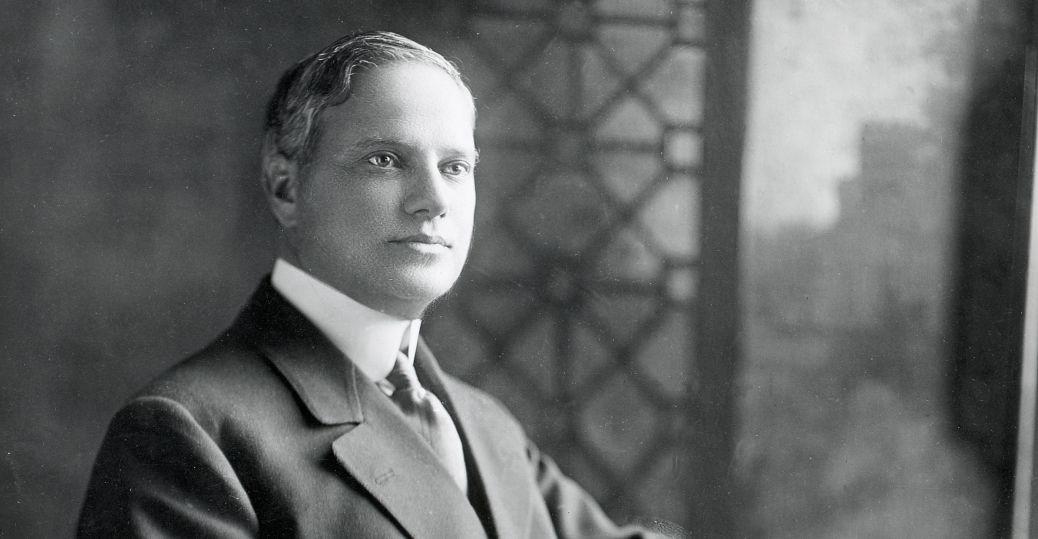
Also on board were Isidor and Ida Strauss, the then owners of Macys department stores. Though Ida could have been saved by the “women first” policy, she refused to abandon her husband; both perished in the tragedy.
--> https://titanicbelfast.com/
BELFAST CITY HALL
One of the most stunning public buildings in Belfast is City hall where free tours are offered daily. You can even try on the robes worn by city councillors in their monthly meetings.
There is also a comprehensive self-guided tour which takes you through many of the elegant rooms of this late Victorian building.
And, in one of the exhibition rooms, you will come across a panel that tells the story of Otto Jaffe, twice elected mayor of Belfast.
Jaffe was born in Hamburg to a Jewish family though the family moved to Belfast to establish a linen export business. In time, Otto took over the family business making it into the largest linen exporter company in Ireland.
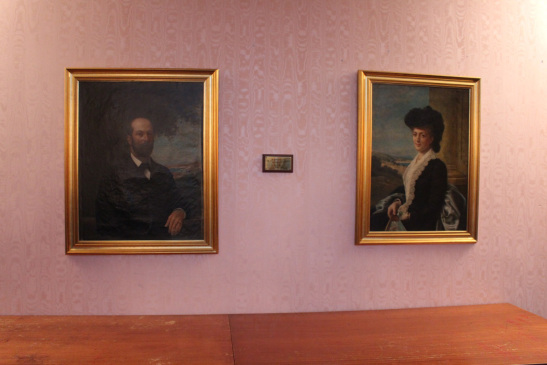
©Maggie O’Neill, Waling Borders - Portraits of Lord & Lady Jaffe at Belfast Synagogue
Jaffe was proud of his Jewish heritage; indeed, he was the driving force behind the building of a new synagogue in Belfast to accommodate the city’s burgeoning Jewish population. Likewise, his wife, Paula, was instrumental in setting up a Jewish school.
Jaffe was first elected as mayor of Belfast in 1899 serving one term; he was again elected mayor for another term from 1904-5.
Fast forward to the First World War and, specifically, May 1915 when the Lusitania was torpedoed off the coast of Cork by a German U-boat. Anti-German sentiment was rife in the United Kingdom. While Jaffe was a naturalised British subject, he and his wife were regarded with suspicion given their German heritage. Eventually, they were snubbed by Belfast society to such a degree that they moved to London. After the war, the Jaffes continued to live in London where they eventually died and are buried.
--> https://www.belfastcity.gov.uk/cityhall
SLIGO AND THE LEONAED COHEN MEMORIAL GARDEN
Singer, songwriter, poet, novelist and painter Leonard Cohen was born in Montreal. He was an observant Jew; indeed, his family background was strongly Jewish: his maternal grandfather was a rabbi while his paternal grandfather founded the Canadian Jewish Congress.

So why a memorial garden in Sligo in the west of Ireland? Back in the early 2000s, Cohen discovered that his manager of many year had siphoned his finances. Consequently, he was forced to go back on tour to earn money again. A World Tour ensued over 2008-2010 where one of Cohen’s most intimate gigs took place at Lissadell House in County Sligo.
Cohen was attracted to Ireland, and particularly Sligo because of its connection to the poet. W B Yeats. His family were originally from Sligo where Yeats used to holiday both as a child and adult. Indeed, Yeats is buried at Drumcliff, close to Lissadell and Sligo Town.
In July 2010, Cohen performed two concerts at Lissadell House, a privately-owned country estate though open to the public for house tours.
In remembrance of his memorable concerts, a memorial garden was developed at Lissadell. However, be aware that it is still in development so don’t expect a Kew Gardens experience. Nonetheless, Lissadell is definitely worth a visit. The estate house is steeped in history and the estate gardens – alpine garden, walled garden and others - are a pleasure to stroll around during the summer months.
--> http://lissadellhouse.com/
CORK'S JEWISH HERITAGE
In September 2019, a new pedestrian bridge opened across the River Lee in Cork named after Cork-born Mary Elmes, known as the Irish Schlinder.
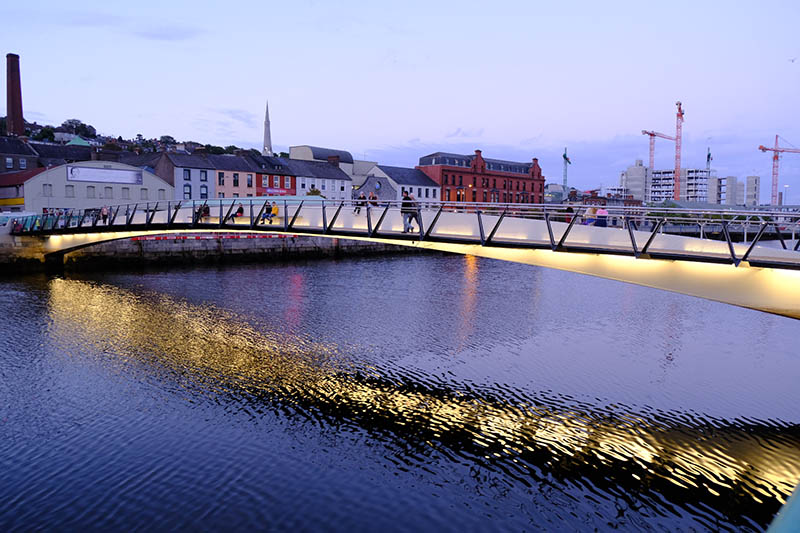
©ec europa.eu
In 2013, she became the first Irish person to be named ’Righteous Among the Nations’ at Yad Vashem, Israel’s official memorial to Jewish victims of the Holocaust.
But who was Mary Elmes who saved so many Jewish children in warn-torn France?
Born in Cork, she studied modern languages (French and Spanish) in Trinity College Dublin. She moved to London after graduation having won a scholarship at The London School of Economics. From London, she moved to Europe to travel, eventually ending up in Spain as a volunteer helping refugees in the Spanish Civil War. In particular, she set up children’s hospitals moving sites as Franco’s forces advanced. After Spain fell to Franco, she moved onto the south of France where she continued to look after Spanish refugees.
With the outbreak of World War Two, she continues her volunteer efforts in South West France looking after a wide range of refugees of all nationalities including Jews. As the holocaust intensified in 1942 and with French Jews being transported to the death camps, Elmes and others put their lives at risk to rescue Jews, especially children, from the trains.
She worked at the Rivesaltes Military Camp which saw its darkest period in 1942. Over 2,000 Jews were transferred from Rivesaltes to the Nazi extermination camp at Auschwitz, where they were murdered. But Elmes and her colleagues were instrumental between August and October 1942 when they saved an estimated 427 children from Rivesaltes camp.
At great personal risk, she hid them in her car, driving them to safe destinations. It is estimated that she saved 200 children, driving many of them through the mountains to Catholic orphanages, and managing to smuggle others across the border into neutral Spain. Many others were helped with documentation enabling them to escape.
In early 1943, she was captured by the Nazi-supporting Vichy regime and imprisoned in a Gestapo-run prison outside Paris. She spent six traumatic months there, but after intervention by the Irish Consulate and the International Red Cross, she was released. By the time she was freed, there were no Jews left in Rivesaltes.
After the war, she was awarded the Legion of Honour by the French government; she declined the award out of modesty.
Decades later, two young boys she saved – Rene and Mario Freund – were curious to identify the woman who saved them from Auschwitz. Rene – now retired Professor Ronald Friend from New York – tracked down the documents that revealed his liberator as Mary Elmes. He was then instrumental in having her added to Yad Vashem, Israel’s official memorial to Jewish victims of the Holocaust.
Today, The Mary Elmes Prize in Holocaust Studies, distributed by the Holocaust Educational Trust Ireland, is named in her honour.
CONTEMPORARY CORK'S JEWISH HERITAGE
During the 20th century, Cork’s Jewish population declined considerably largely due to emigration to the UK and the US. Nonetheless, there are signs of the city’s Jewish heritage: an area close to the city centre called Jewtown, a park named Shalom Park, a ‘Passover Bridge’ and a small exhibition in the Cork Public Museum that brings together the history and heritage of the Jewish community in the city.
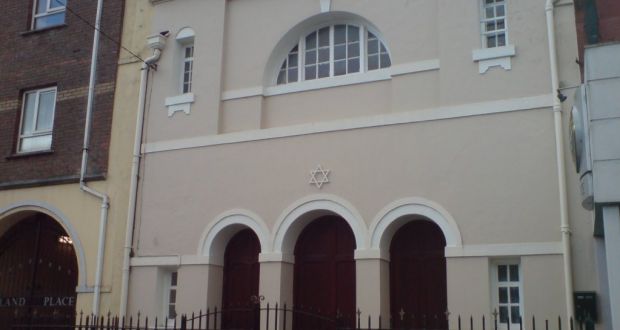
©Irish Times
Today, while the city no longer has a synagogue, there is an active Munster Jewish Community that brings together Jews living in the south of Ireland
--> http://munsterjewishcommunity.com/
Local musician and writer Ruti Lachs has also developed a compelling virtual tour of Jewish Cork; follow this link to join her tour:
--> https://www.youtube.com/watch?v=O6UofsR7F2s&feature=emb_logo
MONSIGNOR HUGH O'FLAHERTY
A stunning daytrip is the Ring of Kerry that combines dramatic landscapes and scenic coastal routes. Along this route lie a few interesting nods to Ireland’s Jewish heritage that are worth exploring.

©Louis Raaijmakers
Your first stop is Cahersiveen. As you enter the town, you’ll see a mural of Hugh O’Flaherty adjacent to the church (more about that church shortly). Hugh O’Flaherty is buried in the graveyard adjoining the church where each year Jewish people lay pebbles on his grave.
In Judaism, placing stones on a grave has various interpretations: to keep the soul of the person in this world or to ward off evil spirits. Another interpretation is The Hebrew word for ‘pebble’ is tz’ror – and it happens that this Hebrew word also means ‘bond.’ By placing pebbles by his grave, Jews show that they have been here, and that the individual’s memory continues to live on in and through them.
But why? And why is Hugh O’Flaherty remembered so fondly by Jews?
O’Flaherty grew up in County Kerry; his father was a golf course steward at The Killarney Golf and Fishing Club. While the young O’Flaherty planned on training to be a teacher, he became a Catholic priest with his final studies in Rome. He stayed on in Rome after ordination and joined the Curia, the Catholic Church’s civil service.
During the inter war years, O’Flaherty mixed in the social life of Rome. As an avid golfer, he played with Mussolini’s son-in-law and other Roman luminaries.
When World War Two broke out, O’Flaherty began touring POW camps around Italy under the cover of being a POW chaplain. At the same time, he was assiduously finding missing POWs and feeding the information back to their families.

As detailed in a commemorative website [www.hughoflaherty.com]:
In the autumn of 1942, the Germans and Italians began to crack down on prominent Italian Jews and aristocratic anti-fascists. Having socialised with these people before the war, the Monsignor now hid them in monasteries and convents, in his old college and in his own residence. In the spring of 1943, his operation broadened to include escaped British prisoners-of-war and shot-down allied airmen. He developed a network of safe apartments in Rome in which they could hide.
It is estimated that O’Flaherty working with his network of fellow priests, foreign ambassadors and underground resistance saved over 4,000 people hiding them in safe houses in and around Rome.
With concealing such large numbers, O’Flaherty became known to the German SS, in particular, the head of the SS and Gestapo in Italy, Herbert Kappler. So incensed was Kappler with O’Flaherty’s use of the Vatican’s neutrality that he had a wide white line painted around St. Peter’s Square to highlight the border between Italy and the Vatican State.
For his Jewish evacuees, O’Flaherty covertly arranged for Jewish services to be held at the Basilica di San Clemente, which was run by the Irish Dominican priests.
According to an Irish Times article (Patricia Murphy, 23 August 2018): Monsignor O’Flaherty was particularly disgusted by the Nazi oppression of the Jews. There is one story that found its way into my narrative. A German Jewish couple came to him offering a gold chain to hide their child. He did better than that. He disguised them as a nun and a priest and hid their son in an orphanage for the duration of the war, returning the gold chain on liberation day.
When Rome was liberated by the Allies in 1944, it is estimated that over 5,000 Jews were hidden by O’Flaherty and his cohort: 3,700 were hidden in private homes, 1,500 in monasteries, convents and colleges. 300 in Castel Gandolfo (the town where the Pope has a summer residence), 200 or 400 (estimates vary) as "members" of the Palatine Guard and some 1,500 in monasteries, convents and colleges.
A made for TV movie – The Scarlett and The Black - (1983) starring Gregory Peck as Monsignor O’Flaherty captured the story of O’Flaherty’s efforts to save Jews and POWs in Italy during Word War Two. It’s just over two hours and a worthwhile movie to learn more about this wonderful Irish hero.
In the early 1960s, O’Flaherty suffered a stroke. He moved to live with his sister in Cahersiveen where he passed away in 1963; hence, the mural to him in Cahersiveen.
There is also a prominent state to O’Flaherty in Killarney where he was a high school student. His oft spoken motto adorns the wall adjacent to his stature; “God has no country”.
--> https://www.hughoflaherty.com/

©Louis Raaijmakers
DANIEL O'CONNELL - THE LIBERATOR FOR CATHOLIC........AND JEWISH EMANCIPATION
As you visit Cahersiveen and O’Flaherty’s grave, visit the very unique church. It’s the only church in Ireland dedicated to a lay person, not a saint. Born just outside Cahersiveen in 1775, Daniel O’Connell was what we would call today a human rights activist. In particular, he campaigned in the early 1800s for Catholic emancipation allowing Catholics to practice their religion in public.
Let’s move on our journey around the Ring of Kerry to Derrynane, O’Connell’s home, now a historical heritage site under the care of the Irish state.
At the annual O’Connell summer school in 2015 held at Derrynane, The Irish Times reported: Prof Bric [University College Dublin – Prof. of History] noted that O’Connell saw his campaign for Catholic emancipation as an argument that civil rights should not be blinded or in any way qualified by private religious belief and that was why he also championed the cause of both Presbyterian Ireland and Jewish emancipation.
Indeed, O’Connell when asked about religious freedom he said, “No man can admit the sacred principle (of Catholic emancipation) without extending it to the Jew as to the Christian.”
He went further, campaigning in 1846 for the repeal of the British law "De Judaismo". This law, which prescribed a special dress for Jews, was successfully repealed by his efforts. O'Connell said: "Ireland has claims on your ancient race, it is the only country that I know of unsullied by any one act of persecution of the Jews".
O’Connell was also involved in the campaign against American slavery. He campaigned with Frederick Douglass, an ex-slave and antislavery activist, who visited Ireland in 1845.
Daniel O’Connell is revered as one of Ireland’s great patriots of the 1800s; Dublin’s principal street is so named, O’Connell St. Indeed, many Irish cities and town have streets named after O’Connell. He is buried at Glasnevin Cemetery in Dublin in a most ornate crypt.

©Heritage Ireland - Ros Kavanagh
A GIFT FROM ISRAEL - THE STEEL TREE
Stay on the Ring of Kerry travelling from Derrynane, the home of Daniel O’Connell, to the delightful village of Sneem.
This delightful quaint village hosts a Sculpture Trail to statesmen like Charles de Gaulle, local sporting heroes like John Egan and more.
Of Jewish interest is The Steel Tree sculpture. It is a gift from the people of Israel to the Irish State in remembrance of Cearbhaill O’Dalaigh, the fifth president of Ireland. The sculpture is a modern polished steel Israeli sculpture, presented by Irish born President Chaim Herzog who was the sixth president of Israel. Herzog grew up in Dublin where his father was Chief Rabbi of Ireland. During a state visit to Ireland in 1985, the sculpture was unveiled by President Herzog in honour of his childhood friend, Cearbhall Ó Dálaigh who was supportive of Jewish causes during his public life.
The sculpture by Israeli artist Tamara Rikman-Charny. She specialises in steel and aluminum sculptures where showing human images reduced to a series of lines and forms.
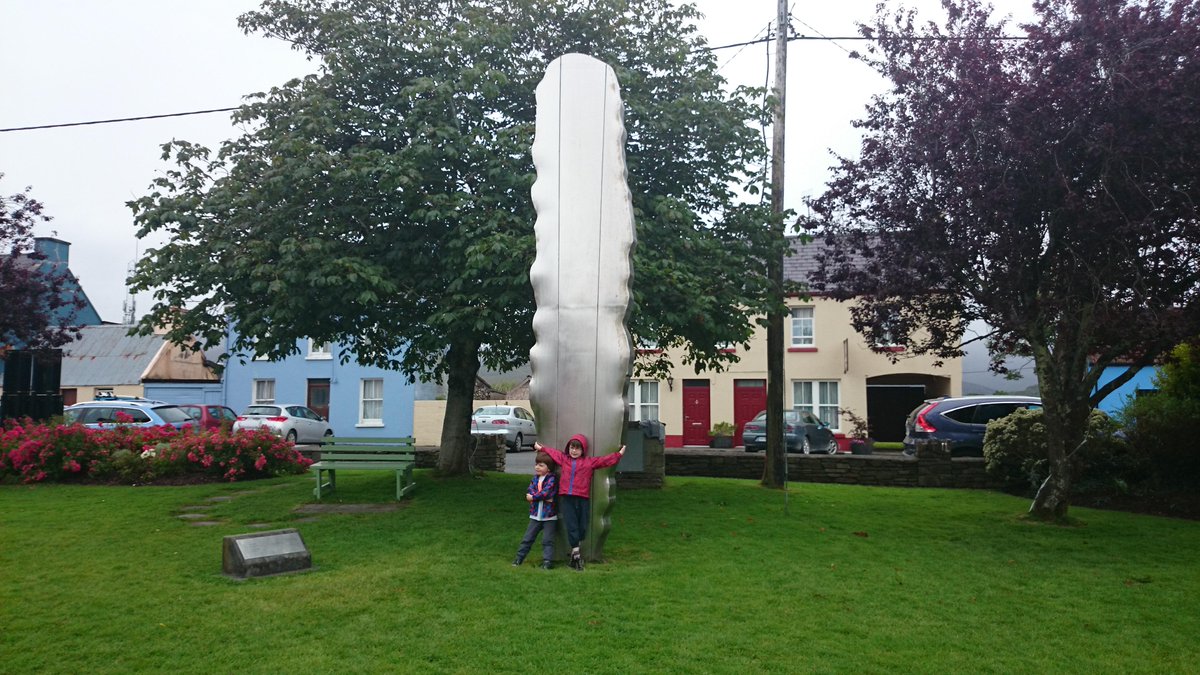
©Eamon Davis Delaney
ASHFORD CASTLE
Moving on up to the west of Ireland, one of the world’s most iconic hotels, Ashford Castle was purchased by the Tollman family in 2013.
Of Jewish South African background, The Tollmans starred their hospitality business in Capetown back in 1920. Solomon Tollman owned a small hotel there which was the beginnings of what is now a global travel and hospitality business.
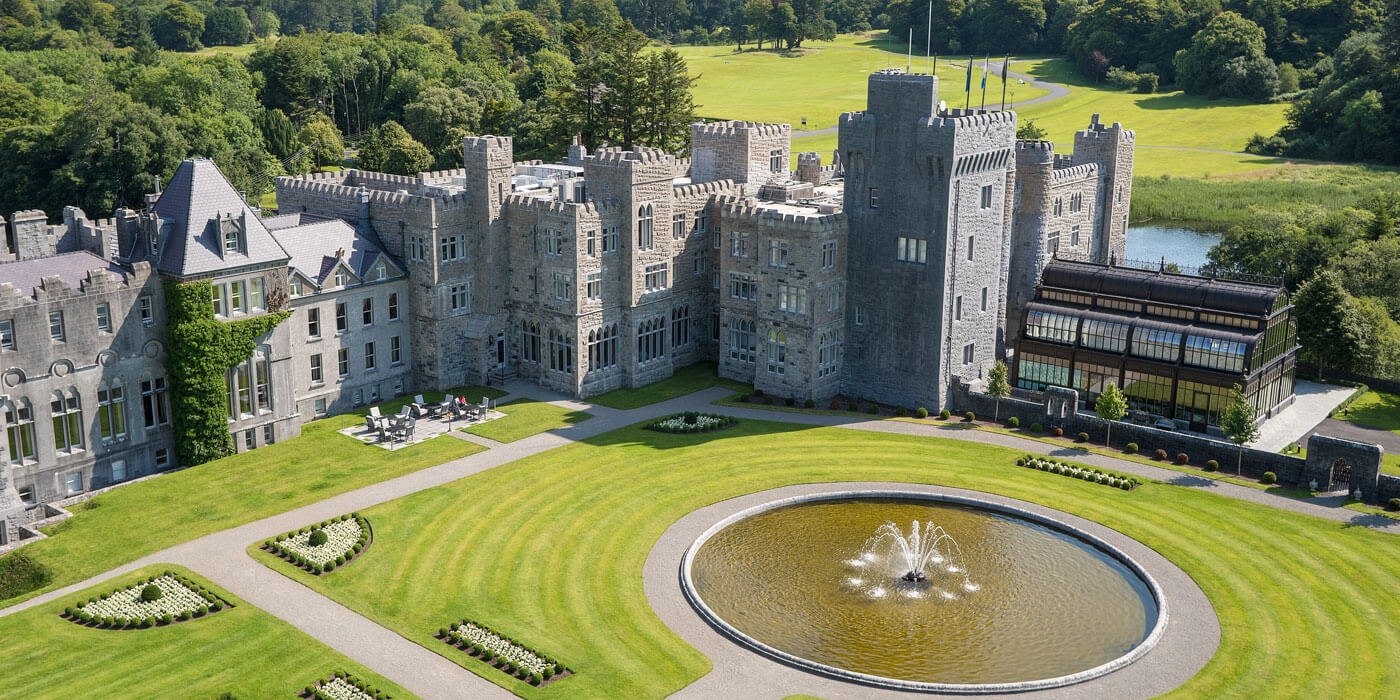
©Ashford Castle
For centuries, Ashford Castle has been welcoming guests to this very special location by the side of Lough Corrib. Originally built by the De Burgo family, it was their stronghold in the west of Ireland. The castle passed from notable reigning families over the centuries. By the mid 1800s, it was bought by the Guinness family (of brewing fame) as their country retreat away from Dublin. Fast forward to 1939, it became a luxury hotel. Following the acquisition of the hotel by the Tollman family, the hotel underwent extensive refurbishment. It was then voted the world's best hotel by Virtuoso, a US-based luxury travel network of travel advisors, in 2015.
Ashford abounds in superlatives; its rich heritage, opulent interiors, superb dining and memorable experiences around the estate.
Jewish families are known for the importance of food and cuisine. Like any good Jewish family, the Tollmans are advocates of great food. So do look out for Bea Tollman’s memoir and cookbook “A Life in Food”:
`Delicious comfort food has always been my speciality, with each dish highlighting the ingredients and none being overpowering,' Tollman writes. `I believe that most people when dining out or staying at hotels want good value, tasty and satisfying food, without too much complication or fuss.'
‘A Life in Food’ is available in Mrs T’s gift store on the Ashford estate or online at most good e-bookstores.
--> https://ashfordcastle.com/
FURTHER READING:
For more information on Jewish Ireland, check out the following resources:
Websites:
Jewish Ireland www.jewishireland.org
Holocaust Educational Trust Ireland www.hetiireland.org
Hebrew studies at Trinity College https://www.tcd.ie/nmes/herzog-centre/
Reading:
Keogh, Dermot, 1998, Jews in Twentieth-Century Ireland, Cork University Press (Foreword by Chaim Herzog, President of Israel, 1983-93).
DISCOVER A HIDDEN IRELAND
Our Journal Writers are passionate about the special people and their special homes that inspire them to write and share their experiences. Join our club of fellow travellers and heritage enthusiasts reading their stories of discovery around Ireland.
Hennessy & Furlong Ltd. Company No 578355 Registered Office: Cappawhite, Co. Tipperary, Ireland. E34 TK71


